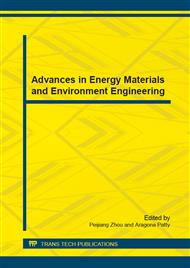p.455
p.460
p.466
p.470
p.475
p.482
p.487
p.495
p.501
Risk Assessment of Heavy Metals Pollution for Rosa sterilis and Soil from Planting Bases Located in Karst Areas of Guizhou Province
Abstract:
Heavy metals (Hg, As, Pb, Cd, Cr, Cu) pollution in soil samples of Rosa sterilis planting areas located in Wudang District in Guiyang and Pingba County in Anshun was studied using a new evaluation theory of pollution loss rate, and following a series of methods for Rosa sterilis leaf including over standard rate, enrichment coefficient, single pollution index and comprehensive pollution index, the heavy metals pollution of the two Rosa sterilis planting areas was analyzed and evaluated. The results showed that the soil comprehensive pollution loss rate ranged from 12.73% to 28.26% in Wudang District samples, most of which belong to light pollution level. The comprehensive soil pollution loss rate of the sampling points in Pingba County varied from 9.68% to 16.10%, which belong to fairly clean level. Meanwhile, the experimental results for the Rosa sterilis leaf showed that the contents of Cr and Pb in both planting areas exceeded the permissible limit, while other elements were below the safe limit. The six heavy metal elements in Rosa sterilis leaf did not accumulate.
Info:
Periodical:
Pages:
475-481
Citation:
Online since:
December 2014
Authors:
Keywords:
Price:
Сopyright:
© 2015 Trans Tech Publications Ltd. All Rights Reserved
Share:
Citation:


